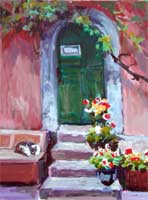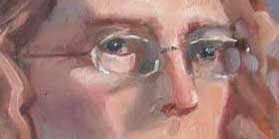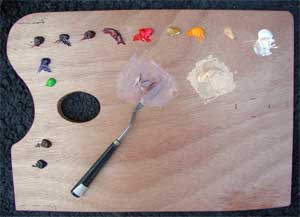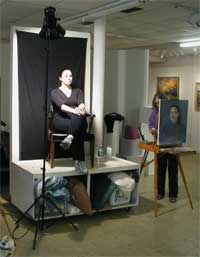Pricing is very personal. Base it on concepts like exchange, what the market will bear, and what you're willing to part with your art for. Take into consideration how long it takes you to paint a painting and what you want or need per hour for your work. Establish your "wholesale price" as the least you want to part with a painting for. The “retail price” should be at least double that depending on what gallery you're in. Some US galleries take 60% and it’s well worth it for a gallery that really sells. My experience is that it's easier to sell your work through a gallery because people assume that the gallery personnel have made important decisions about product viability. People don't usually trust their own intuition. Also, you need to take into account how fast you want to sell. Price lower if you're prolific and you want turnover.
There's another consideration. How long a time do you expect to be in the business of art? I’m 62 now, I've begun thinking about what will happen to my paintings when I die. I mean, I intend to live to at least 85, but who knows. At some point, I will make a list of relatives, buyers, students, and friends and invite them to "have" a painting just to give the paintings a home. (Somewhat like having a cat.) (Those of you reading this who are my friends and students better make sure you let me know when you move!)
In short, pricing art is a personal thing. I would suggest that you browse local galleries and outdoor shows and see if you can get an idea of what the "market price " is. What are people asking? Are they selling?
 I sell as high as $3400 for large commissioned work. On the other hand, I've recently begun selling small early pieces (16 x 20 and less) on eBay for much less. I decided to try it just to see if there was some kind of market. There was. But browsing through the eBay art market was very discouraging at first because there's so MUCH out there for sale and so little of it sells. I was surprised to find that I have a certain kind of art (sort of impressionist landscape) that apparently fits the market. It is possible that the people who buy go look at my website and bio and decide to buy based on my background and awards. I've sold 6 pieces now and I consider it a viable outlet for older smaller pieces. If you want to see what I offer at any time, just do a search on ebay.com for COULTER. (That’s my signature name.)
I sell as high as $3400 for large commissioned work. On the other hand, I've recently begun selling small early pieces (16 x 20 and less) on eBay for much less. I decided to try it just to see if there was some kind of market. There was. But browsing through the eBay art market was very discouraging at first because there's so MUCH out there for sale and so little of it sells. I was surprised to find that I have a certain kind of art (sort of impressionist landscape) that apparently fits the market. It is possible that the people who buy go look at my website and bio and decide to buy based on my background and awards. I've sold 6 pieces now and I consider it a viable outlet for older smaller pieces. If you want to see what I offer at any time, just do a search on ebay.com for COULTER. (That’s my signature name.)










